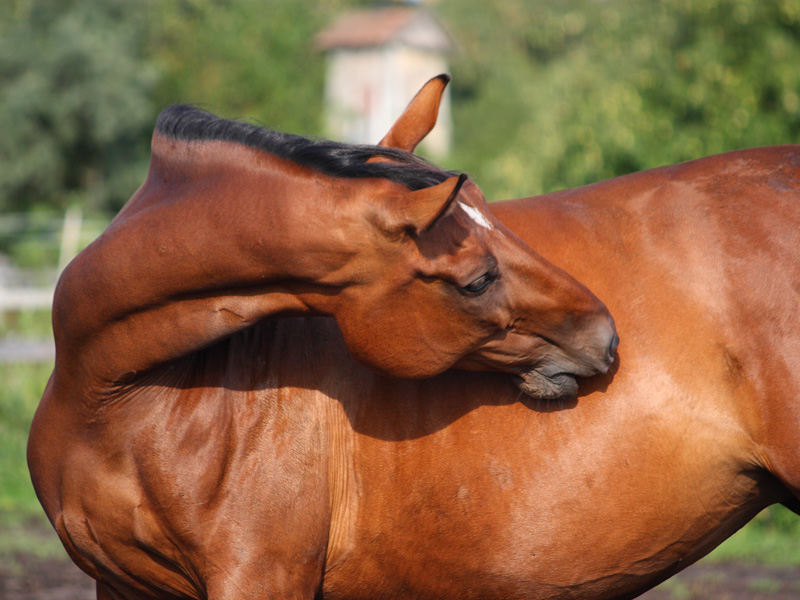Gastric ulcers occur commonly in horses, and severity can vary greatly between horses. Ulcers may be clinically silent or be associated with a variety of signs including inappetence, light condition and poor performance. Horses have evolved to graze throughout the majority of the day, and therefore the stomach is rarely empty and a constant flow of saliva serves to buffer acidity in the stomach.
The equine stomach is divided into glandular and non-glandular portions (See image), and this means there are marked differences in the acidity in various areas of the stomach.
Ulcers generally occur in the non-glandular mucosa and are usually more severe on the lesser curvature of stomach.

The cause of gastric ulcers is multifactorial, but is known to include nutritional factors, such as increased concentrated carbohydrate feeding and reduced levels of roughage, as well as decreased time spent grazing. Exercise is also known to play a part, as exercise can reduce blood flow to the gastric mucosa, as well as increase the intra-abdominal pressure (I.e. during fast work) leading to greater bathing of the non-glandular lining with acid stomach contents.
What are the clinical signs of ulcers?
Clinical signs in a horse with ulcers may include:
- Poor appetite
- Failure to thrive (Ill thrift)
- Weight loss
- Colic around mealtimes
- Poor performance
- Behavioural change (Irratibility)
Or, sometimes there may be no signs at all!

Diagnosis
Often diagnosis is made by veterinarians via a detailed history and clinical examination. However, definitive diagnosis is only made when a horse has a gastroscope (camera placed into the stomach of the horse) and the ulcers have been visualised and graded for severity. For this to occur, horses must be fasted for 12 hours off food, and 6 hours off water prior to examination.
Management and treatment of gastric ulcers
Management is usually centred around alterations in dietary management (increased provisions of roughage and/or turnout for grazing), or a return to low starch/high fibre diet however this may not be curative and is often incompatible with intensive training. Medical treatment is recommended for horses with both clinical signs and gastroscopic evidence of moderate-severe ulcers.
- Omeprazole (Gastrozol, Ulcershield, Omoguard) is a proton pump inhibitor, and is the most potent licensed product available in Australia for treatment and prevention of ulcers. Once-daily dosing is required for a minimum of 4 weeks followed by a reduced dose for maintenance.
- Ranitidine/Cimetidine (Ulcerguard) is a histamine receptor antagonist, and is also useful in the treatment of severe ulcers, but requires 2-3 times daily dosing.
- Sucralfate (Carafate), which is a mucosal protectant, assists in healing of ulcers once present but has no effect in preventing ulcer formation.
What do gastric ulcers look like?
Images courtesy of Merial Animal Health

Prognosis
Clinically significant ulcers, if untreated, can affect training by limiting frequency/intensity of fast work or racing (failure to maintain condition).
With appropriate treatment and management changes, ulcers can be managed satisfactorily in the majority of affected horses.
Southwest Equine are holding gastroscoping days for our clients every couple of months, so keep an eye on our facebook page for upcoming Gastroscoping days to ensure you don’t miss out!

